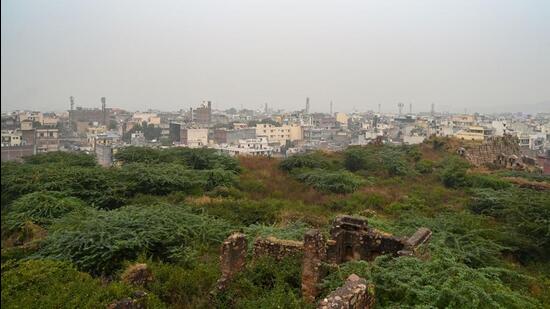Our Terms & Conditions | Our Privacy Policy
Non-electric, non-essential vehicles disallowed from Delhi forests | Latest News Delhi
Delhi’s environment minister Manjinder Singh Sirsa on Monday banned non-electric and non-essential government and private vehicles from entering Delhi’s forests and protected areas with immediate effect. The minister also directed the forest department to replace all diesel-run and internal combustion engine (ICE) vehicles with electric vehicles (EVs) within 60 days.
The southern ridge in Delhi. (HT Archive)
The minister said the directions were an attempt to urgently minimise pollution and safeguard wildlife in Delhi’s forests.
“Delhi forests deserve quiet, clean mobility – not smoke and noise,” he said, adding that state forest and wildlife department was instructed to conduct a detailed study on vehicles and submit a transition plan within seven days.
“Furthermore, with immediate effect, the entry of all non-essential, non-electric vehicles — both government and private — into Delhi’s forest and protected areas has been prohibited,” the minister said.
He said that the move forms a part of a broader, strategic push by the Delhi government to combat pollution and enhance green infrastructure. “A greener Delhi with clean air is not a distant dream — it is our living commitment. By embracing clean technologies and nurturing our forests, we are shaping a healthier, stronger future for every citizen of Delhi,” he said.
On April 17, Sirsa posted a video of a leopard at Delhi’s Asola Bhatti wildlife sanctuary on X. The minister said he could hear the sound of a tractor in the background noise in the video, which prompted him to issue such an order. “Wildlife should not be disturbed at all,” he said.
Delhi’s notified and protected forest areas include mainly the ridge areas. Besides, the forest department has listed 26 protected forest areas on its website, which include smaller forests at Mitraon, Mukhmelpur, Rajokri, Tughlakabad, Hastsal and Mayapuri, among others.
The Ridge in Delhi, spread across 7,800 hectares, is an extension of the Aravallis and is divided into four distinct zones — the northern ridge (87 hectares), the central ridge (864 hectares), the south-central ridge (626 hectares), and the southern ridge (6,200 hectares). Additionally, the Nanakpura south-central ridge is spread across an area of seven hectares.
A senior forest official said the move was already in place at the Asola Bhatti Wildlife Sanctuary. “Directions have been issued to implement the same rules in other forest areas of Delhi too. Only electric vehicles will be allowed. The only exemptions will be where local employees are required,” the official said on condition of anonymity.
He clarified that essential vehicles, such as water tankers, will continue to enter the ridge.
In the Delhi Budget 2025-25, ₹506 crore was allocated to environment and forest departments to strengthen environmental monitoring, implement pollution control projects, and protect biodiversity, the government previously said. A total of 7 million saplings are also planned to be planted this year in Delhi.
Images are for reference only.Images and contents gathered automatic from google or 3rd party sources.All rights on the images and contents are with their legal original owners.



Comments are closed.